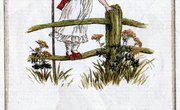Using a hands-on approach to teach concepts such as fast and slow helps make the ideas concrete and can reinforce the learning process for preschool children. Activities that teach young children about fast and slow can also connect content areas such as science, language and even the creative arts as the children learn about this pair of opposites.
Race Down Ramps
Use ramps to demonstrate fast and slow to give the preschoolers a hands-on opportunity to experience the concepts. You can make your own ramps using pieces of wood or molding in different lengths. According to the National Association for the Education of Young Children, this activity is essentially a preschool-level physics lesson that helps your students to start to understand the science behind fast and slow motion as they begin to learn the basics of how gravity and force work. Build up different heights by propping one end of each ramp up on stacks of blocks. For example, make a short three block stack ramp and a tall eight block ramp. Choose two of the same objects to race down the ramps. Use toy cars, trucks or marbles. Ask the preschoolers to observe the race and tell you which one went the fastest and which one was the slowest. Ask questions such as, "What is the difference between the fast and the slow ramps?" or, "How do the ramps look different?" Repeat the activities with the same-sized ramps, but different racing objects to compare which objects move faster or slower.
Create a Classification Collage
Include an art activity in your discussion of fast and slow to help your students understand and identify the differences between things that move fast and things that go slow. Page through child-friendly magazines and cut out pictures of vehicles, animals or anything else that moves. For example, cut out a race car, a train, a horse and buggy, a turtle and a cheetah. Work together as a class and have the preschoolers sort the pictures into two groups -- one fast and one slow. Draw a line down the center of a piece of poster board. Have the students glue the slow pictures to the left side and the fast ones to the right, classifying each item into one of the two categories.
Speed Up the Beat
Young children can learn how to think critically through the use of hands-on music activities, according to the National Association for Music Educators. Give your preschoolers simple instruments to make a beat with. If you don't have drums or similar rhythm instruments, make your own. Use empty cardboard canisters, pots and pans or wooden spoons. Start by having the students follow your beat. Make a slow beat and then speed it up. Compare how slow and fast rhythms sound. Invite your students to make their own beats. Call out "slow" or "fast" to let them know which type of rhythm they need to make. Record the sounds and then play them back for your students. Ask the preschoolers to identify which recording is fast and which one is slow.
Creative Movement Set to Different Speeds
Some children learn best through moving their bodies. These kinesthetic, or physical, learners aren't the only children who benefit from creative movement experiences, either. Preschoolers can put themselves into the center of the learning process and create fast and slow motions with their bodies. You can set this activity to music, using the tempo to dictate when the students should move fast and when they need to go slow. After they get the hang of moving to different paces, they can try making their own movements without music to follow. For example, call out "fast" and have the students jump up and down quickly, or say "slow" and ask them to twirl or crawl slowly. As they move at different rates, your students will demonstrate that they recognize the difference between fast and slow.
Related Articles
References
Writer Bio
This article was written by the CareerTrend team, copy edited and fact checked through a multi-point auditing system, in efforts to ensure our readers only receive the best information. To submit your questions or ideas, or to simply learn more about CareerTrend, contact us [here](http://careertrend.com/about-us).










